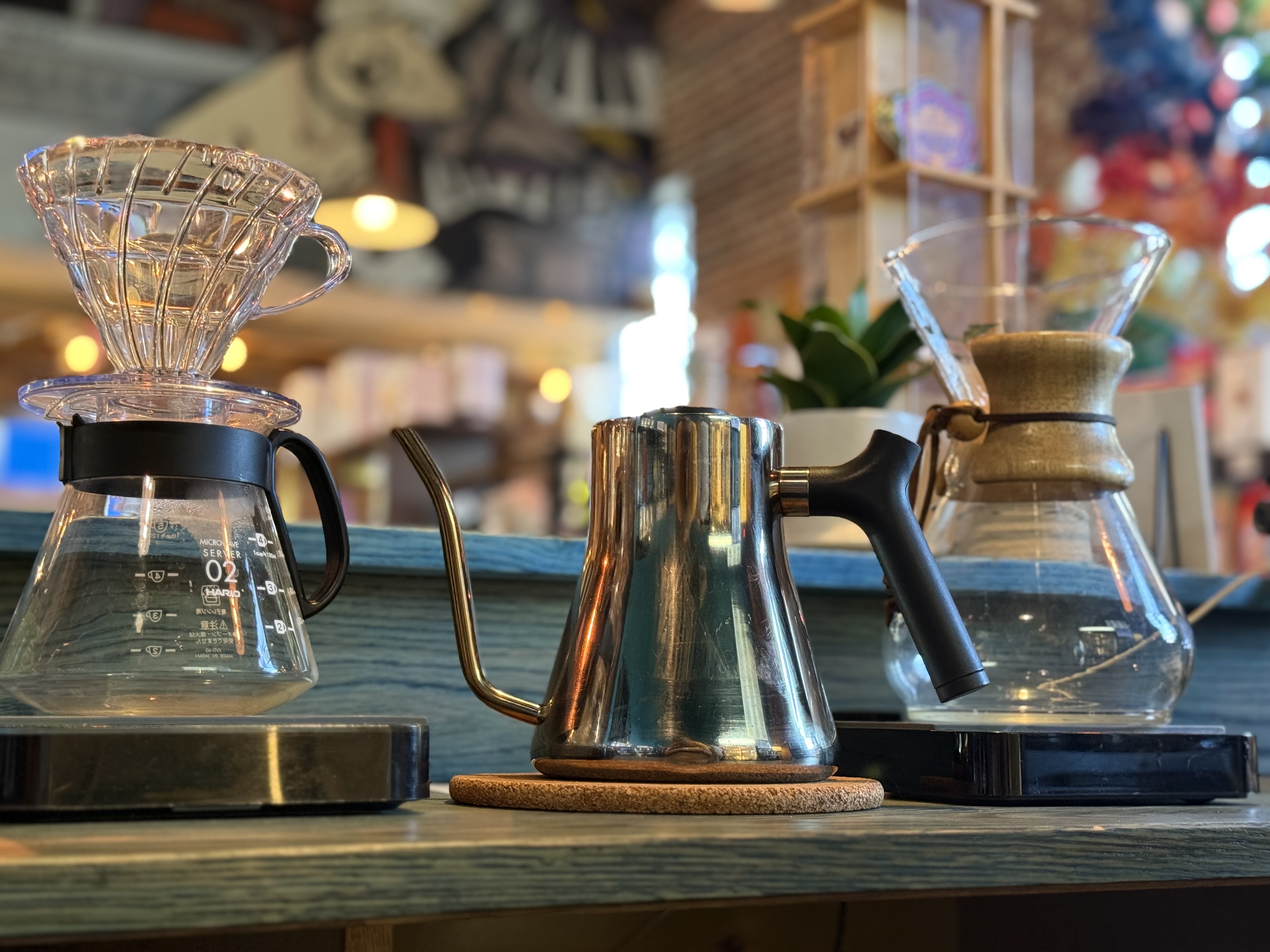FREE Shipping on all Retail Coffee Bags in USA

If you love coffee - there is a good chance you've had both incredible and downright awful cups of coffee. It can seem overwhelming to figure out what makes one experience different than another, but we are going to break it down for you.
TL;DR
When it comes down to it, you want fresh coffee ground right before being brewed that uses good water and brewed at the right ratio of coffee to water. Some solid principles include:
- Buy coffee with a roast date on it, not an expiration date. Ideally within a month of the roast date.
- Buy whole bean coffee and grind it at home whenever possible.
- Use water, such as bottled spring water, that has some mineral content in it for better tasting coffee.
Below will show you more detailed descriptions of how you make sure those things are happening.
GOLDEN RATIO
When you’re brewing coffee, one of the most important things to getting the right taste is making sure the right amount of water is used for the amount of coffee you’re brewing with. We always start with the golden ratio of 1 part coffee to 16 parts water. You will see this listed as 1:16 ratio many places. Because most brewing guides and digital scales do things in grams, this would mean that you would use 400 grams of water when you are brewing with 25 grams of coffee (which will yield a 12 oz. cup of coffee). This is a great starting point for any coffee, and from there you can adjust to ratios anywhere from 1:15 to 1:18.
Espresso is different, and we do a 1:2 ratio for espresso shots.
GRIND
When grinding your coffee, you want to make sure you grind for the method you are brewing. Ideally, you will grind right before you brew. If this is not possible, understand that the quality of your coffee will decrease significantly over time. Most pre-ground coffee you find at the store will not work well for pour overs, and are terrible for a French press. If you’re not going to buy a coffee grinder your best bet is to buy quality coffee at a local shop or roaster and have them grind it for you.
All coffees are different, but here is a summary of standards to help guide you to the best results.
Fine (Like Powdered Sugar)
Espresso and Turkish brew methods require a fine, almost powder-like grind. This is nearly impossible to accomplish without a proper grinder meant for espresso.
Medium Fine (Like Table Salt)
Aeropress is a brew method that can benefit from a medium fine grind, though Aeropress is notorious for have endless options and recipes.
Medium (Like Regular Sand)
Most pour overs, such as the V60 or the Kalita Wave, need a medium grind.
Medium Coarse (Like Rough Sand)
Chemex requires a coarser grind than your typical pour over, as well as the Clever Dripper.
Coarse (Like Sea Salt)
French press coffee requires coarse grind, as well as cold brew methods.
RINSE & PREHEAT
If you're using a filter pour over method (Chemex, V60, Kalita Wave, etc) you want to rinse your filter or you risk a papery taste in your coffee. Since you also want to warm your brewing vessel, your best bet is to rinse your filter with hot water into whatever you're going to brew in. If you make sure what you're brewing your coffee into is hot, then your carafe or mug you're brewing into won't absorb a bunch of heat at the beginning of your brew. This also applies to the French press. Whatever you do, and however you do it, make sure you discard the water you used to preheat and rinse anything!
BLOOM (30-45 seconds)
You will always want to add hot water, usually around 60-100 grams, and make sure you hit all of the visible coffee with some water so you don't see any dry spots. Bubbles will form and escape as it degasses. Newer coffees will have a lot more gas it needs to degas. Coffee with no gas escaping during bloom is old and likely won't taste super fresh. Fresher coffee with lots of gas escaping during this phase so bloom for 45 seconds, with standard coffee should be fine with 30 seconds of bloom time.
FILL
After coffee has bloomed, it is time to fill your brewer with the water needed to meet the golden ratio (or whatever ratio you are going for). You generally want to pour in concentric circles moving from the center of the coffee out to the edge of the brewer and the back in again. Depending on preference or the type of brewer you're using, this will either happen in one continuous pour or in intervals that will sometimes be called pulses.
DRAWDOWN
Once all of the water is in the brewing vessel, you want let the water and coffee do it's thing. When it is done, if it is possible or practical, swirl the coffee around to homogenize it for optimum flavor. When the brew is completed, inspect the coffee bed. You want a nice flat and even coffee bed. If a lot of coffee is stuck up the sides of the filter you may have poured too hard or didn't circle in and out with the water effectively. If the bed is pitched to one side, you may have favored one area a little too much.

